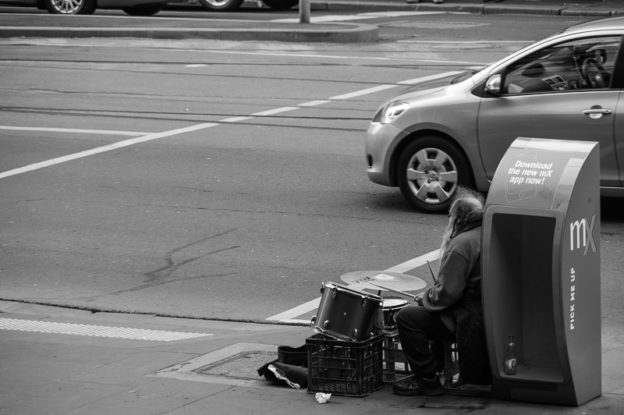It sounds easy: let’s make our work online. We can discuss online, we can meet and even have social events online. We can video conference with family, friends and colleagues at any time and, so far, mostly with reliable networks. This is an amazing and sudden success of digitalization that was unforeseen and deemed impossible only a few weeks ago. It also brought people together (again), supported networks of help and support and made neighbors recognize each other’s immediate needs. However, this produces new forms of exclusion beyond general questions of access to technology and internet. There are a number of groups that get out of sight if we #stayathome and that need our special attention as spatial planners. Usually, we would see these groups outside and using our public spaces, our infrastructures and being usual part of our urban or rural life.
First group: homeless people. If we go out as usual, we are confronted with people who are homeless, with beggars and with people who seem to be poor and might not have a home at all or no comfortable and safe home to go to. This group is barely accessible by available digital tools, though it is among those with the highest need of support. Recent media coverage from India uncovers the problems of Corona lockdowns in informal economies and for people without stable jobs or savings (see e.g. https://edition.cnn.com/2020/03/30/india/india-coronavirus-social-distancing-intl-hnk/index.html). Where (and how) can we develop safe and non-humiliating spaces for this group?
Second group: single-person households. This sounds unexpected and is only true for a part of this group. In particular, this includes first singles without dense social networks and second the increasing ways of non-local (or globalized) living models. No matter if in extreme depictions like in Putnam’s “Bowling Alone” (1995) or in milder forms, whoever had few social contacts before the crisis can struggle to keep a social life with social distancing or in establishing new contacts. For spatial planning, a group with loose social connections is also more difficult to grasp. In the same way, people with only loose connections to specific places are now difficult to reach digitally for transforming any place. Corona has also forced any global citizen to become localized again, at least for some time.
Third group: functional Analphabets and full Analphabets. The amount of people with functional illiteracy is between 8% in 40% in European countries (Vágvölgyi et al. 2016). This group of people already has enough problems to organize bureaucracy and to participate in a literate society. It is a major part of our society that uses spaces and has an interest in transforming them. In pre-corona times, they would be included in any random sample when asking people on a street and they would not differentiate in their use of public spaces and facilities if we count. As our communication on planning gets more digital, we must ensure not to exclude this group who can not read our emails, social media channels or alike in enough detail. They will get less information by random contacts on the street, through schools, club meetings, public events and alike.
Fourth group: children. The last year’s have seen many approaches to involve children in planning. However, many of them rely on physical interaction, on play and on sessions held in kindergartens, schools or clubs. Staying at home for a month or more is relatively much more in a life of a child than an adult. This needs our attention to continue involving them in thinking about our surrounding spaces and in transforming and designing them. Online tools might work here in accessing ideas of this group. They necessarily lack the experience in touching and in physically using that are more important for children. More importantly, it is against many educational and social goals to extend the time in front of screens or phones even further beyond school and communication with friends and family. For this part, we already see approaches to collect experiences of children and young adults in a multifaceted way (e.g. in German: https://www.koerber-stiftung.de/geschichtswettbewerb/mitmach-aktion).
Fifth group: elderly people. This is the most discussed group and probably the group that is most in danger through infections by Corona. The group is highly diverse and has overlaps especially with the second and third group. It both regularly uses public spaces, local shops and infrastructures and relies on social contacts while it seems most vulnerable. This implies special care and restrictions of non-necessary personal contacts probably for longer than for other groups. We somehow ‘see’ this group, but cannot interact in planning. On the positive side, we see many emergent potentials of digital technology and many old people engaging in digital communication. This can definitely be used more in planning in the future and can also ensure to include elderly people with health issues or restricted mobility in our planning processes.
This list is more spontaneous and open for ideas and discussion about ways to include these groups in planning processes and in our spaces as much as possible. Corona has uncovered great adaptive measures to cope with an emerging and uncertain situation. It has showed us how much is actually possible in a digital environment and will have long-lasting effects in how planning work and planning communication can be done. At the same time, we must keep a special eye on potentially excluded groups and aim for ways to be inclusive towards them.

Leave a Reply